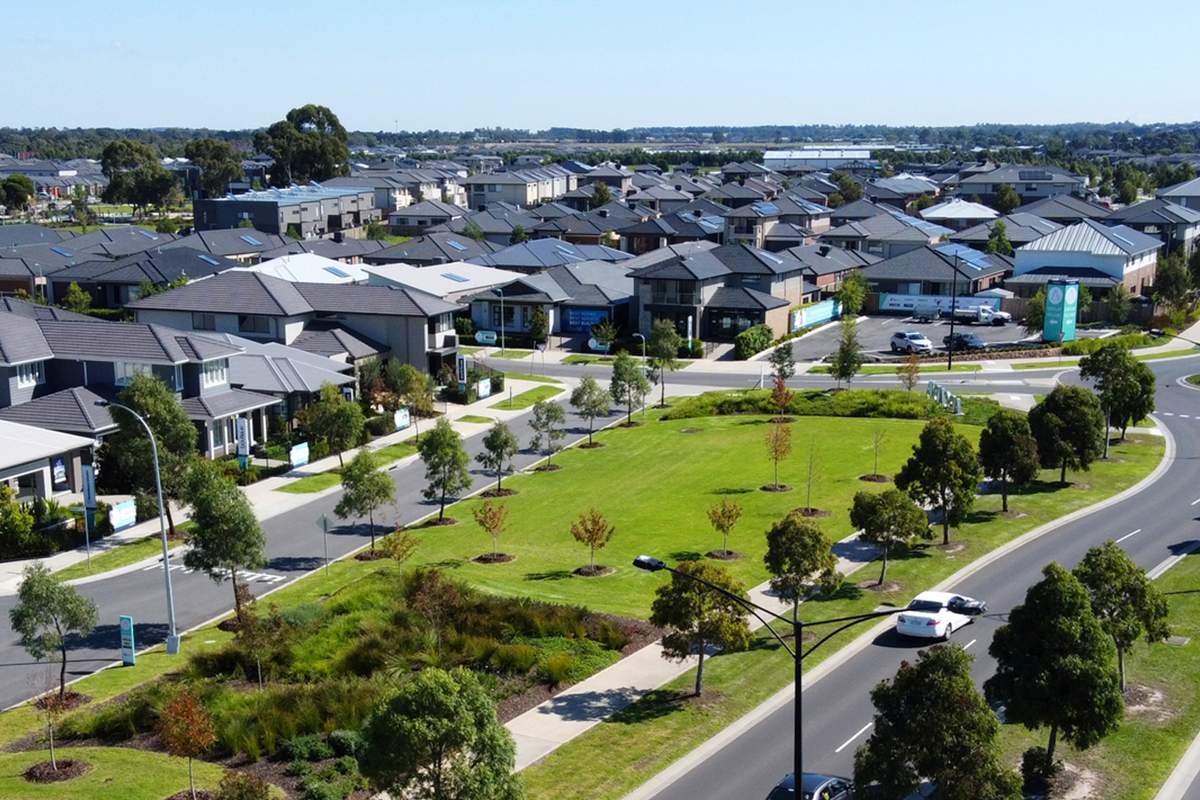FAQs
Home Buyer's FAQs: Common Questions Answered
As one of Australia’s leading developers of masterplanned communities, having helped more than 250,000 people find homes across 180 Satterley communities, we know the questions that home buyers want answers to.

Frequently Asked Questions
Here, we break down the most commonly asked property questions, giving you the answers you need as you set out on your land buying, home building journey.
A land title, title deed, or Certificate of Title, is a legal document issued by the relevant state or territory’s official government department for land ownership. It includes a legal description of a piece of land and names the owner. When you buy a property the title must officially transfer from one owner to another.
If you buy an untitled lot in a Satterley estate, a Certificate of Title is yet to be issued for that homesite. Whereas if you buy a titled lot in a Satterley estate, the individual Certificate of Title will already be available.
Settlement cannot be finalised until your homesite has an individual Certificate of Title. Purchasing an untitled lot will allow you around 12 months to work on building plans and continue saving to maximise your deposit. If you purchase a titled lot, then settlement and new home construction can begin sooner.
As a legal proof of ownership, the land title is important for securing financing and transferring of ownership. It’s advisable that you as the home buyer conduct due diligence, making sure the title is free of encumbrances or disputes. In essence, a secure land title is a fundamental aspect of a transparent and legally sound real estate transaction.
Settlement is the term to describe the process and the day on which you legally become the owner of your new homesite. On the day of settlement, once finance has been approved, your homesite will transfer from the ownership of the seller or developer to yourself. At the time of settlement the block becomes yours, mortgage payments begin and your builder is able to proceed with construction of your new home. Settlement usually takes place within 10 business days of titles being issued. Generally, a settlement agent/conveyancer/solicitor will handle this process for you.
A settlement agent/conveyancer/solicitor is the person or company who prepares the necessary paperwork to finalise the purchase of your new homesite. They work in your best interests, ensuring that you understand your rights and obligations relating to your property purchase. They liaise with your lender and other relevant parties to finalise the transfer of ownership of your new homesite from the developer to yourself. They will also notify all relevant parties (e.g. local council) that the transfer has taken place and that you are the new owner. Once you have nominated a settlement agency/conveyancer/solicitor they will send you a letter of appointment to allow them to act on your behalf in the property transaction.
In the context of residential estates, buying ‘off-the-plan’ means that you are purchasing a homesite that is yet to be developed. You may be able to view the area where the street and homesite will eventually be, or even view maps and plans showing the area, but the laying of the road and marking of the lot may be several months away. Generally, buying ‘off-the-plan’ is common in communities where there is strong demand for new homesites.
Depending on your income, lending history and personal circumstances, most lenders will want around 5-20% of your property’s value as a deposit. (Remember, this means 5-20% of both the cost of the land and building your home).
If your deposit is less than 20% of your home’s value, you will generally be required to pay an additional fee known as Lenders Mortgage Insurance (LMI). This is intended to protect the lender in the case of default. However, there are government incentives such as the First Home Guarantee and the Family Home Guarantee that can allow you to take out a loan with as little as a 2% deposit without the need for LMI<link to incentives & rebates>.
A building covenant refers to the design guidelines that stipulate what and how you can build in a residential estate. Covenants generally cover things such as exterior paint colours, setbacks, how much front garden you can have approval for and the types of materials that are allowed in buildings within the community.
While covenants tend to vary between communities, they are fundamentally designed to ensure the architectural appeal of your home and the integrity of the community in the long-term. Satterley building covenants will appear as an annexure in your contract of sale, can be viewed on our estate websites and will be fully explained by one of our sales professionals.
While regular shaped blocks tend to be the more common option, irregular shaped blocks can offer some unique advantages. Often, these types of lots are intended to maximise a view over parkland or ocean, or to include some larger sized homesites within a community. It’s best to talk to your Satterley sales professional to see if an irregular shaped block is the right choice for you.
If you intend to buy an irregularly shaped block, you can make the most of it by optimising both space and aesthetics. When planning for design, consider your home’s landscaping, outdoor living spaces, storage solutions and multifunctional spaces.
From one-off lump sum payments and stamp duty concessions, to exemptions on Lenders Mortgage Insurance, there are a number of government-funded incentives and rebates designed to give first home buyers a financial boost as they prepare to set foot on the Australian property ladder. However, with the rules, eligibility criteria and grant sizes differing between states and territories, it’s important to know what’s available in your region.
Once the contracts have been signed and the deposit has been paid, it’s time to start planning the build of your new home. Your new home plans and specifications will need to be finalised, and a building contract signed to enable your lender to confirm finance approval by the date stipulated in your contract.
When your loan is approved, your lender and settlement agent will then liaise to arrange settlement. The settlement agent will send you a Transfer of Land document to sign, and the lender will prepare mortgage documents which you will need to sign.
At settlement, your lender will pay over any mortgage funds needed for the land purchase, and the signed Transfer of Land is lodged at the relevant government department in your state to enable the land to transfer to your ownership. It’s important that you sign and return all documents promptly so that settlement can proceed on time.
This is a homesite suitable for a more narrow, terraced house design with a garage built at the back of the property. They are an ideal design for homes built on corner blocks with a small frontage, or blocks that have access from a laneway at the rear of the property.
Cottage lots are smaller, low maintenance homesites around 350m². They suit people looking for an easy-care, lock-up and leave lifestyle, with most of the site dedicated to home with less outdoor space.
Traditional homesites are suitable for free-standing home designs and are usually 400m² or greater, offering planty of living space and a good sized outdoor area or garden.
Frontage refers to the width of your homesite at its front or street-side. Satterley communities offer a range of lot sizes with frontages ranging from 6 metres for terraced houses to 21 metres for larger, free-standing family-sized homes. The frontage is important as it determines the size, shape and style of home that will fit on your block, and also features such as garages.
A setback refers to the minimum distance that a building must be constructed from a curb, property line, or other structure. Setbacks tend to vary between estates and are generally different among properties within a community. Because setbacks can affect where your new home is situated on your lot and where pools, gazebos, garages or other features may be built, it’s best to talk to your Satterley sales professional or builder about how this may influence your design.
Unlike traditional home loans taken out for established properties where the lender pays the purchase price to the seller at settlement, construction loans allow the lender to pay part of the total amount of your loan to the builder in several transactions as the construction progresses.
These payments are called progress payments, and occur as your builder meets certain milestones in the construction process. Progress payments are usually made at times such as when the foundation or pad is laid, when brickwork is complete and when the roof is on. Your lender will release funds for each stage as it’s completed. Your home loan is drawn several times until the builder has been paid in full and your house is complete.
There are many financial and lifestyle benefits that come with building a new home. Only having to pay stamp duty on the land component of your purchase, enjoying a reduced down payment and having access to a range of government grants and concessions all make building from scratch an attractively affordable option. On the lifestyle front, building a new home means that you will get a house designed specifically for your lifestyle and fitted with your choice of customisations and sustainable features. With everything being new, there is the benefit of not having to worry about maintenance or repairs for some time.
